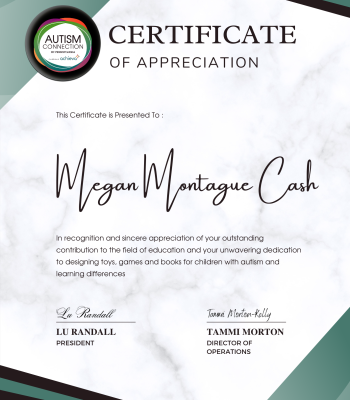Autism Connection of PA received a special donation from J.J. Sedelmaier Productions in White Planes, New York. Sedelmaier is an animator, film producer, author, illustrator, and a creative force who understands the importance attention, art, and design. He donated a light box for Autism Connection to use for activities for people of all ages and stages on the autism spectrum.
- Light box in a box
- Illuminating objects and images
- Attention and focus
- Autism Connection logo with backlight
How Light Boxes Help
Using a light table can be a highly beneficial tool for supporting the development and engagement of autistic people of all ages and stages. The soft, diffused light emitted from the table provides a visually stimulating and calming environment, which can help regulate sensory experiences. The translucent surface allows for the exploration of various materials and objects placed on top, enabling users to engage in sensory play, fine motor skill development, and visual tracking exercises.
The illuminated table also enhances visual attention and focus, making it an excellent tool for activities such as tracing, drawing, and learning letter and number recognition. And the versatility of a light table encourages imaginative play and creativity, allowing autistic people to express themselves and engage in meaningful, multisensory experiences. Overall, incorporating a light table into the learning and therapeutic environment can facilitate their sensory integration, cognitive development, and overall well-being.
List of Light Box Activities
- Shadow Play: Use the light box to create shadow puppets or objects. Experiment with different hand gestures and shapes to create original shadow stories.
- Tracing Art: Place a piece of paper on the light box and trace favorite characters or objects. They can color in the traced image afterward to create their own artwork.
- Tangrams: Provide tangram puzzle pieces and arrange them on the light box to create various shapes, animals, or objects. It’s a great way to enhance spatial reasoning and problem-solving skills.
- Sensory Play: Fill transparent containers with colorful objects, such as beads, feathers, or buttons, and place them on the light box. Explore and sort the items based on different attributes like size, shape, or color.
- X-ray Play: Gather various objects, like toys or natural objects, and place them on the light box. Observe the objects from the top and explore their internal structures, mimicking an X-ray effect.
- Color Mixing: Place translucent colored materials, such as plastic sheets or stained glass shapes, on the light box. Overlap different colors and observe how they blend and create new shades.
- Letter and Number Recognition: Use transparent letter or number tiles on the light box and arrange them in alphabetical or numerical order. This activity helps reinforce letter and number recognition skills.
- Storytelling: Provide transparent story cards or characters and create stories on the light box. Arrange the characters, props, and backgrounds to bring imaginative tales to life.
- Science Experiments: Conduct simple science experiments on the light box, such as exploring the properties of different liquids, observing the growth of plants or crystals, or investigating the refraction of light through various materials.
- Building with Blocks: Combine transparent or translucent building blocks with the light box to create structures with varying colors and shapes. Experiment with balance, stability, and symmetry.
Big thanks to J.J. Sedelmaier for the donation. It will be put to good use.






















